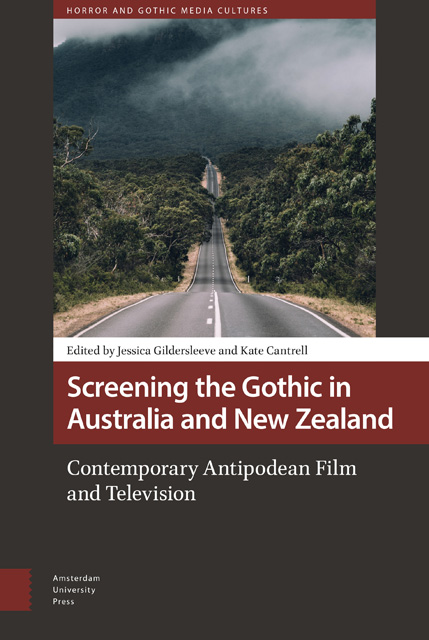9 - Dead, and Into the World : Localness, Culture, and Domesticity in New Zealand’s What We Do in the Shadows
Published online by Cambridge University Press: 24 November 2022
Summary
Abstract
This chapter investigates how the film What We Do in the Shadows (2014) provides a distinctly New Zealand take on the traditional vampire narrative. Presented as a mockumentary, the film exploits the limits of the Gothic horror imagination and tells the tale of four Old World vampires who have ‘emigrated’ to New Zealand. Their secluded existence is continuously challenged as they become acquainted with contemporary gadgets, technologies, and customs. In response to this, the chapter explores the ‘domestication’ of the vampire in What We Do in the Shadows as connected to notions of localness and culture. The vampiric creature ceases to be relegated to layers of supernatural mystique, and instead becomes part of the Gothicized narrative of our twenty-first-century everyday.
Keywords: social and cultural identity; approaches to the everyday; folklore and fiction; regionality
In recent years, the vampire has returned to the popular media scene as a creature deeply entangled with the cultural preoccupations of our contemporary moment. As the fanged creature of myth finds renewed popular status in different, and at times discordant, manifestations, it is not surprising to see that a variety of regional reinterpretations of the vampire have now flourished. What We Do in the Shadows (2014), a New Zealand-based film directed by Taika Waititi and Jemaine Clement, is an example of this revitalization. Presented as a mockumentary, with often parodic tones, the film exploits the limits of the gothic horror imagination, and tells the tale of four Old World vampires – Viago, Deacon, Vladislav, and Petyr – who have ‘emigrated’ to New Zealand, and unexpectedly share a house in the city of Wellington. The vampires recall – in look, names, and mannerisms – a number of ‘famous’ literary, folkloristic, and cinematic vampires, from Vlad the Impaler to Nosferatu, and the aristocratic vampires from Anne Rice's Vampire Chronicles (1976–). But while there is ‘quite a bit of blood’ in the film, this is not the ‘average horror flick’ (Ramji 1). What We Do in the Shadows often gestures towards well-known vampire tropes and stereotypes – from not having a reflection to being sexually irresistible – while also mixing the old with the new, and forcefully including centuries-old vampires, with all their historical quirks, in the technologically advanced bounds of our twenty-first century.
- Type
- Chapter
- Information
- Screening the Gothic in Australia and New ZealandContemporary Antipodean Film and Television, pp. 179 - 194Publisher: Amsterdam University PressPrint publication year: 2022

